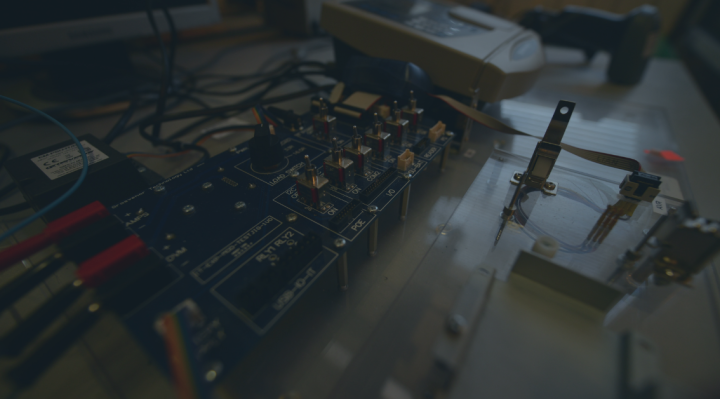Design for Manufacturability (DfM) is a very important strategy in electronics manufacturing, particularly in Printed Circuit Board Assembly (PCBA) and Box Build manufacturing. DfM enables that products are designed in a way to optimize manufacturability to make them easily, repetitively, and at low cost. In electronics manufacturing where mass production and quality consistency are of utmost importance, DfM is needed to minimize attrition rates and improve product reliability.
By incorporating principles of DfM during the design phase, manufacturers can mechanize many production processes, reduce the need for manual intervention, and consequently reduce the cost of production. A well-designed with consideration for principles of DfM, the product has lesser defects, increased product quality, and enhanced overall performance, thereby directly contributing to customer satisfaction as well as building a good image for Original Equipment Manufacturers (OEMs) brands.
1. Improved Efficiency of Production and Lowered Cost
Application of DfM methods in the New Product Introduction phase and before mass industrialization significantly improves manufacturing efficiency. Well-designed PCBAs, for instance, lead to fewer production errors, reducing the quantity of costly rework and repairs. A good example is the elimination of manual soldering and substitution with automated wave soldering, yielding consistency, reliability, and cost-effectiveness.
Properly designed component placement removes the majority of the production constraints. Components left to be mounted randomly might require other operations such as hand soldering, redundant testing, or rework, which contribute to production time and cost. Production time and costs are reduced while improving scalability through designing with reduced lead times for manufacturers by following DfM design principles.
2. Better Product Quality and Lower Return Rates
Products designed with DfM principles in consideration have significantly lower failure rates. Manufacturing defects because of design defects due to improper design decisions lead to increased return rates from the end users. As an example, if a PCBA layout is not designed taking into account thermal management or spacing for reflow soldering, it can lead to solder joint failure or component thermal stress, causing product failure.
Lower return rates and higher reliability directly impact an OEM's brand reputation. If customers experience fewer issues with a product, they are more likely to recommend and trust the brand, which also results in business growth and market competitiveness.
3. Automation of Processes and Reduction in Manual Intervention
Manual processes add variability to production, increasing the likelihood of defects. DfM strategies enable moving from labor-intensive tasks to automation to achieve greater consistency and reproducibility. For instance, designing a PCB layout favorable for automated optical inspection (AOI) can detect defects early on, and that can reduce failure rates.
DfM also optimizes design for pick-and-place machines such that components are positioned in the most efficient manner. Components positioned in the wrong way can require human intervention to correct them, and this will be more expensive to produce. Proper design guidelines, including equal pad spacing and avoiding shadowing effects when using wave soldering, allow easier automation.
4. Increased Collaboration between OEMs and EMS Providers
Electronics Manufacturing Services (EMS) suppliers are in the best position to help OEMs adopt DfM practices. While OEM design groups will be focused on functionality, they may not have an appreciation for manufacturing process complexity. EMS suppliers see production complexity firsthand and know what works best. They can provide expert advice with regard to:
- Optimal PCB layout for assembly automation
- Design decisions that maximize manufacturability
- Production risk-reducing design choices
By involving EMS providers early on in the design process, OEMs can prevent repeated manufacturing issues and benefit from a seamless transition from prototyping to production.
Tools and Software for DfM Verification
Various software tools help verify the compliance of DfM, particularly for PCBA design. The software tools audit PCB layouts and identify potential manufacturing constraints to enable the design to be ready for efficient production. Some of the most widely used DfM verification tools include:
- Valor NPI (Siemens) – A highly prevalent DfM tool that audits PCB layouts for manufacturing constraints and provides feedback for designing improvement.
- DFMPro (Geometric) – A tool that integrates with CAD packages to examine design manufacturability and recommend potential cost drivers.
- CAM350 (DownStream Technologies) – Screens PCB designs for manufacturability and compatibility with fabrication and assembly processes.
- Mentor Graphics (PADS) – Offers DfM rule checks for PCB layout optimization and production efficiency.
Using these tools, OEMs and EMS providers can examine design defects before mass production, reducing errors, costs, and production delays.
Conclusion
Design for Manufacturability (DfM) is essential in obtaining efficiency, quality, and cost-competitiveness in the manufacturing of electronics. By employing DfM principles during design, manufacturers significantly reduce production defects, improve automation, and increase product reliability. Production costs are subsequently reduced, fault is minimized, and brand name is improved for OEMs.
EMS providers play a crucial role in bridging the gap between manufacturing and design through the generation of insightful information regarding the best practices that create a more manufacturable product. Hiring advanced DfM computer tools makes the process wider in scope to include proactive design improvement that improves manufacturability. Use of DfM allows organizations to achieve greater efficiency, enhanced product quality, and competitiveness in the electronics business.







